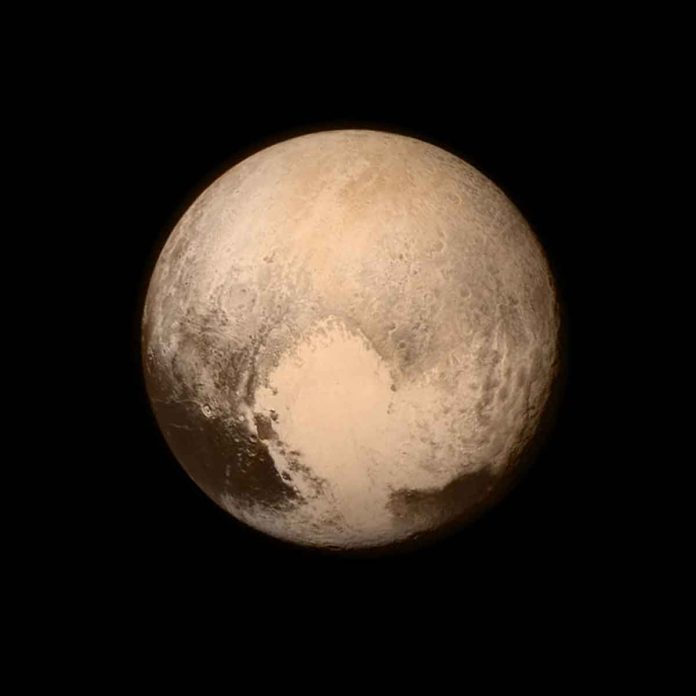Mercury, Venus, Earth, Mars, Jupiter, Saturn, Uranus, Neptune, and Pluto are among the planets. Pluto was included in the list, which was subject to memorization in school and was known as the definitive planetary lineup, until the International Astronomical Union determined it did not meet qualifications in 2006.
Though Pluto is no longer considered a major planet, it is still adored by scientists and frequently makes headlines. The National Aeronautics and Space Administration recently released a technicolor image of Pluto created by scientists to demonstrate the subtle differences between its regions.
Here’s why Pluto is no longer officially classified as a planet.
Why is Pluto not classified as a planet?
Pluto entered the English language in 1930 when astronomer Clyde Tombaugh discovered it while looking for signs of a planet. It wasn’t until the early 2000s that scientists began to define the criteria for a celestial body to be classified as a planet.
The International Astronomical Union (IAU) decided in 2006 that the definition of a planet should be based on three criteria:
- It revolves around the sun.
- It has enough mass to take on a nearly round shape.
- It has cleared the area around its orbit.
IAU members also agreed that dwarf planets and planets are distinct categories. They discovered eight planets in the solar system: Mercury, Venus, Earth, Mars, Jupiter, Saturn, Uranus, and Neptune.
According to the Library of Congress, Pluto does not meet the third criterion because it is not gravitationally dominant. Pluto is now classified as a dwarf planet rather than a major planet like its previously assumed siblings.
What exactly are dwarf planets?
Dwarf planets are smaller planets that do not fit into all three of the planet’s categories. They are round in shape and orbit the sun, but they do not clear their orbital path, according to NASA. Our solar system currently has five recognised dwarf planets, which are listed below in order of closest proximity to the Earth:
- Ceres: An asteroid discovered in 1801 in the Asteroid Belt between Mars and Jupiter.
- Pluto: A Kuiper Belt object discovered in 1930.
- Eris: A Kuiper Belt planet discovered in 2003.
- Makemake: A Kuiper Belt planet discovered in 2005.
- Haumea: A Kuiper Belt planet discovered in 2003.
Controversial classifications
While the IAU definition of planets remains the most widely used, it is not universally accepted. Some planetary scientists disagree with the 2006 vote, claiming that the definitions are arbitrary. In 2018, University of Central Florida scientist Philip Metzger published a study claiming that the standard for classifying planets is not scientifically sound.
Metzger contends that planetary scientists employ the term “planet” in a variety of contexts because it is a functionally useful term, and that a planet should be defined by its intrinsic properties rather than its orbit, which can change over time.
Metzger said in a UCF press release, “It’s more dynamic and alive than Mars,” referring to its underground ocean, multiple moons, organic compounds, and multilayer atmosphere. “The Earth is the only planet with a more complex geology.”
Alan Stern of NASA also disagrees with the IAU. In an interview with Forbes, he stated that all dwarf planets should be considered planets for a variety of reasons, including the fact that the solar system contains so many asteroids that no celestial body has cleared its orbit.

